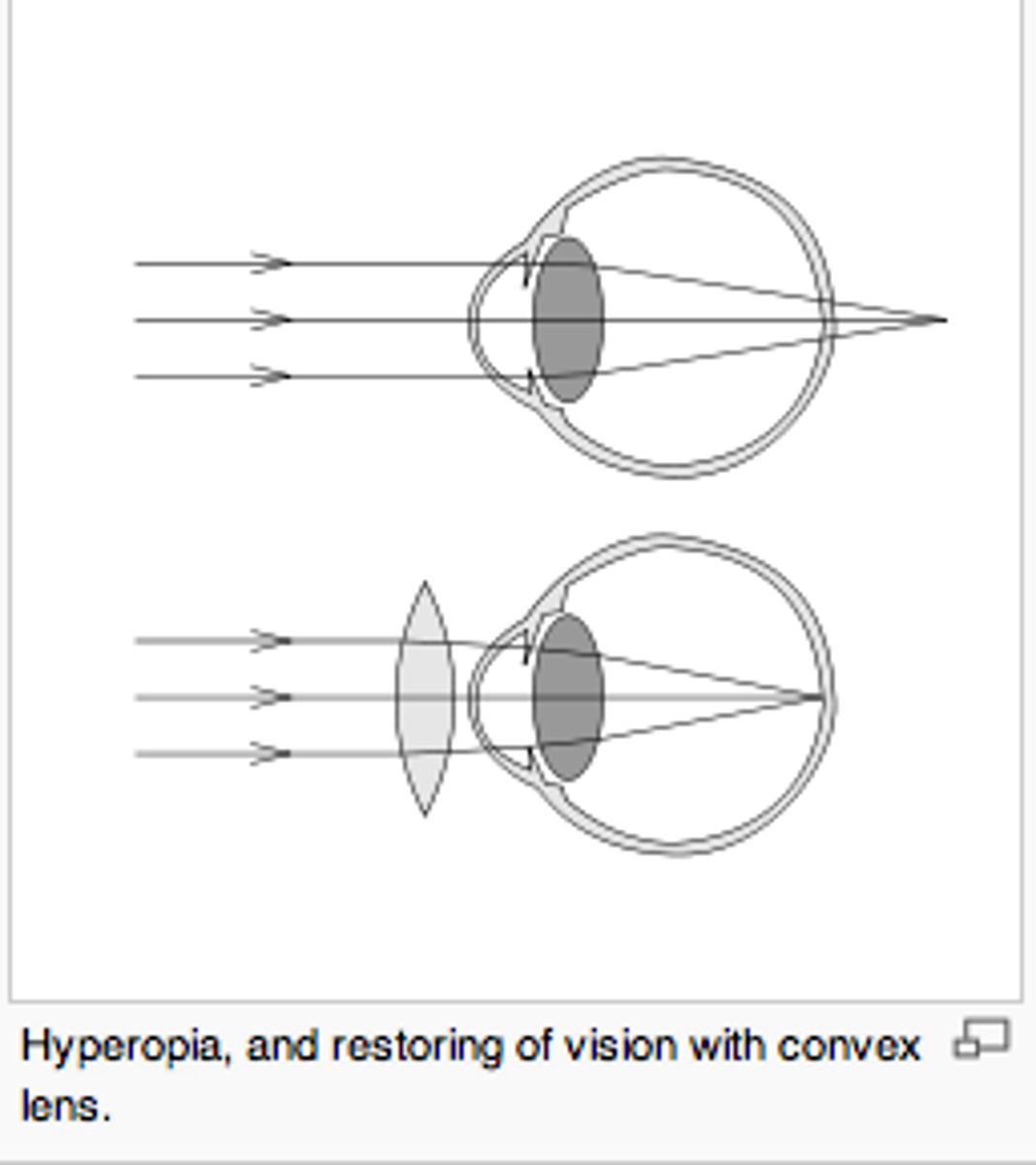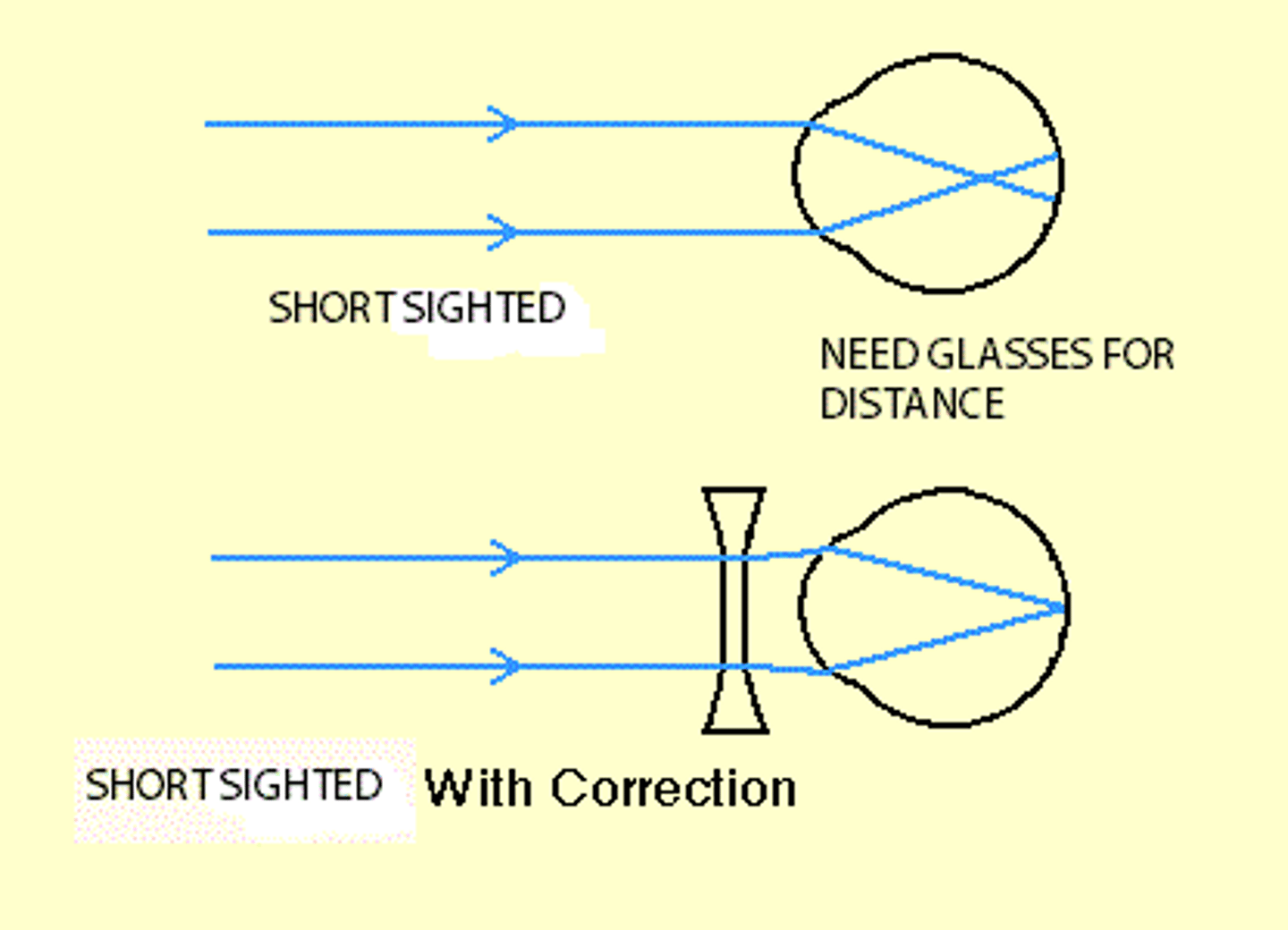GCSE AQA Biology- The Eye
1/19
There's no tags or description
Looks like no tags are added yet.
Name | Mastery | Learn | Test | Matching | Spaced |
|---|
No study sessions yet.
20 Terms
Sclera
Tough protective, supportive layer around the eye
Cornea
Transparent outer layer found at the front of the eye. Refracts (bends) light into the eye
Iris
Contains muscles that allow it to control the diameter of the Pupil (hole in the middle) and therefore how much light enters the eye
Lens
Focuses light onto the retina
Retina
Contains receptor cells (rods and cones) sensitive to light intensity and colour
Rods
responsible for vision at low light levels, black and white vision
Cones
active at a higher light level; red, blue or green vision
Ciliary Muscles
Controls the shape of the lens
Suspensory Ligaments
Attaches the lens to the ciliary muscle
Optic Nerve
Carries image impulses from the receptors on the Retina to the Brain
Adjusting To Bright Light
Pupil decreases in size as the circular muscles in the Iris contract and radial muscles relax
Adjusting To Dim Light
Pupil enlarges in size as the radial muscles in the Iris contract and the circular muscles relax
Focusing On Near Objects
Ciliary muscles contract, meaning the suspensory ligaments slacken, causing the lens to fatten (curve) increasing the amount by which it refracts light
Focusing On Distant Objects
Ciliary muscles relax, meaning the suspensory ligaments tighten, causing the lens to become thinner (less curved), meaning it refracts light by a smaller amounts
Long-Sighted (Hyperopia)
-Unable to focus on near objects
-Image behind retina instead of in it
-Lens doesn't refract the light enough
-Convex Lenses are used

Short-Sighted (Myopia)
-Unable to focus on distant objects
-Eyeball too elongated
-Lens refracts light too much
-Concave Lenses are used

Contact Lenses
Thin and sit on the surface of the eye and compensate for fault in focusing
Laser Eye Surgery
Can correct vision by changing the shape of the Cornea but has the risk of complication
Replacement Lens Surgery
More effective than Laser Eye Surgery but carries even higher risks
Accommodation
process of changing the shape of the lens to focus on near or distant objects